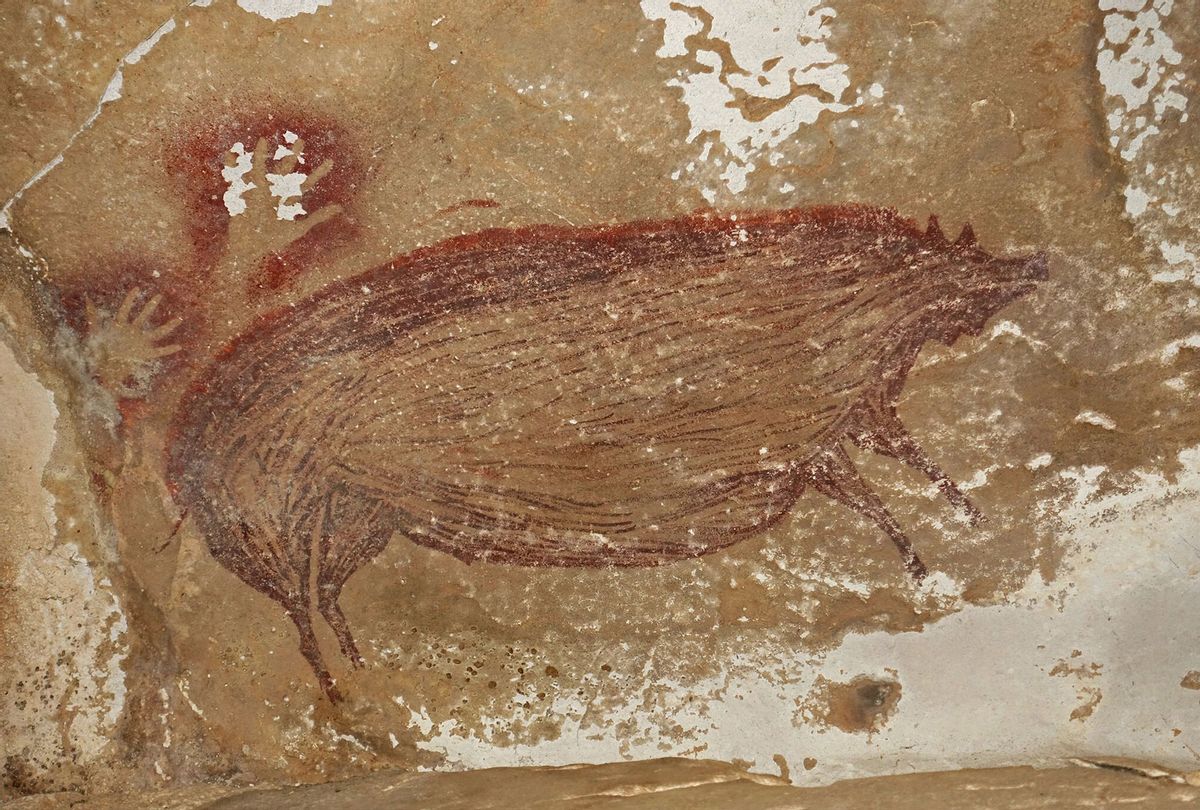45,500 years is a long, long time. It is nearly 23 times as long as the distance between the point at which you are reading this article and the birth of Jesus Christ. It is roughly 9 times as long as the distance between the present day and the rise of ancient Egyptian civilization.
And, according to a recent archaeological paper, that is how long ago artists on an island in modern-day Indonesia were in a cave, painting an adorable rendering of a pig. If their estimations are correct, that pig portrait could be the oldest known example of a figurative drawing, meaning a form of art that attempts to depict the real world rather than designs or patterns.
According to the paper published in the journal Science Advances, there is a purplish pig drawn in the Leang Tedongnge cave on the Indonesian island of Sulawesi that can be traced back at least 45,500 years through a method known as uranium-series dating. The pig drawing was initially discovered in December 2017 during an archaeological survey in Sulawesi's limestone karst caves, which are known for being filled with prehistoric art. Scientists decided to learn about its age after that.
Notably, it is possible that the painting is even older than 45,500 years old; the uranium-series dating only measured the age of a mineral deposit known as speleothem on the cave walls. It is also possible that the paintings are not that old, as some scholars argue that uranium-series dating is unreliable because uranium can leach into the water rather than decay and thereby artificially increase an object's apparent age as told through radiocarbon dating.
The pig in the painting bears a striking resemblance to the warty pig (S. celebensis), which still exists today and even lives on the same island where the picture was discovered. The authors believe it may be identifiable as a warty pig because of its "'spiky' head crests, represented by a row of short dashed lines in the crown and upper back area" and the fact that it has close to its eyes "facial warts, represented by two conspicuous, horn-like protrusions depicted side by side in the upper snout area."
There are other pictures of pigs near the one in the cave, many of them in a state of decay. The authors in the study speculate that the artists could have been telling a story about hunting the pigs or watching them mate.
It was not easy for researchers to find this ancient porcine portrait.
"Getting to it requires a difficult trek along a rough forest path that winds through mountainous terrain and ends in a narrow cave passage, which is the only entrance to the valley," Adam Brumm, an archaeologist at Griffith University and co-author of the study, told The New York Times. "The valley can only be accessed during the dry season; during the wet season the valley floor is completely flooded and the residents have to travel around on dugout canoes."
Another interesting twist to the story is that the artists may not have been human, at least not in the anatomically modern sense of the term. No one has found human remains on Sulawesi that are 45,500 years old, and it is entirely possible that a different species of hominin (the family to which humans belong) lived in Indonesia during that period and created the drawing. Brumm, however, believes that the painting was made by humans, telling The New York Times that this is because of "the sophistication of this early representational artwork." He also pointed to the fact that the painting uses "twisted perspective," showing an animal both from the front and from its side, and that there are handprints, both of which are consistent with other forms of prehistoric art created by human beings.
The consensus view right now is that the oldest forms of figurative art were depictions of mammoths and lions painted in Spain's El Castillo cave and France's Chauvet Cave between 30,000 and 40,000 years ago.

Shares